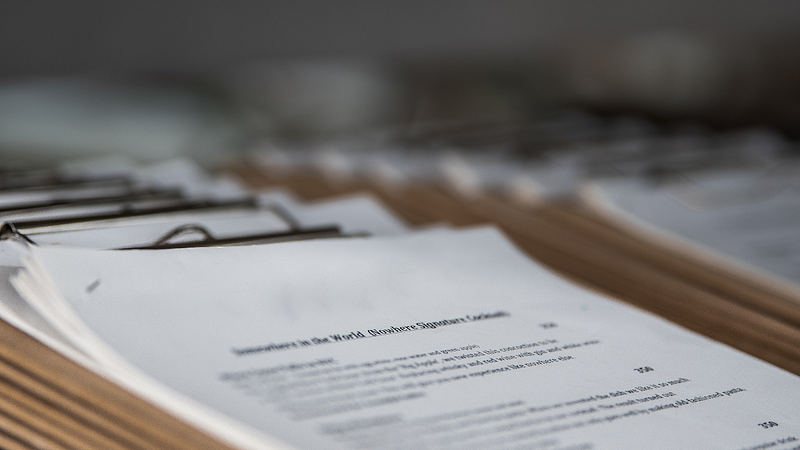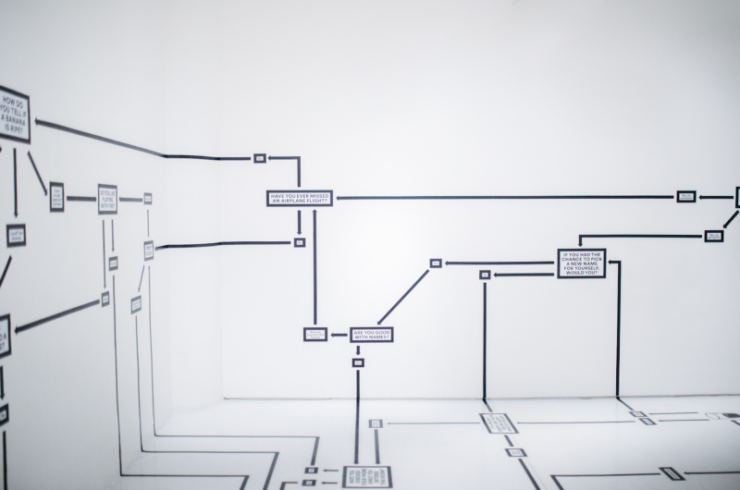Ensuring that projects progress smoothly throughout their life cycle is a crucial responsibility of project managers, and one that is very difficult to achieve successfully.
There are a number of ways project managers can go about this, but one of the most important is creating and following a communication plan.
In this article, we will cover communication plans in further detail, how you can develop your own, as well as discuss different methods of communication within project management.
Let’s get started!
Definition Of A Communication Plan
A communication plan is a document that outlines how, when, and by whom information will be exchanged between parties involved in a project.
It is essentially a roadmap for communication in project management, and should be created early on in the project’s lifecycle in order to avoid confusion and miscommunication down the line.
The contents of a communication plan will vary depending on the project and the parties involved, which we will go through in further detail below.
Key Components of a Communication Plan
There are a few key components that should be included in every communication plan. These are detailed below, as follows:
The Objectives of the Communication Plan
What is the purpose of this document?
Without underlying the purpose of having a communication plan, your team members and yourself will be unsure as to why you have it in the first place.
Hence, it is important to always keep the objectives of your communication plan at the forefront of your mind. By doing this, you will be able to develop a clear and concise plan that meets all of your project’s needs.
The Stakeholders Involved in the Project
Who needs to be kept up-to-date with project progress?
It is crucial to identify all stakeholders early on, as they will need to be communicated with throughout the project.
This includes both internal and external stakeholders.
Internal stakeholders are those who are directly involved in the project, such as project team members, while external stakeholders are those who are not directly involved in the project, but who still need to be kept up-to-date with its progress.
The Methods of Communication That Will be Used
What is the best way to get information across to your stakeholders?
There are a number of methods of communication available, and it is important to choose the most appropriate ones for your project.
Some common methods of communication include email, phone calls, video conferencing, and face-to-face meetings.
It is vital you choose the most appropriate channels for your project in order to ensure that all stakeholders have access to the information they need.

The Frequency of Communication
How often do stakeholders need to be updated?
Depending on the project, this could be daily, weekly, or even monthly. It is important to communicate with stakeholders regularly in order to keep them up-to-date with project progress.
Example of a Communication Plan
To better illustrate the composition of a communication plan, here is an example of a basic version at its very core:
- [Name of project] communication plan
- Date: [date]
- Version: [version number]
1. Introduction
This communication plan has been created for the [name of project]. It outlines how, when, and by whom information will be exchanged between parties involved in the project.
2. Stakeholders
The stakeholders for this project are as follows:
- [Name of stakeholder 1]
- [Name of stakeholder 2]
- [Name of stakeholder 3]
3. Methodology
The methodology that will be used for this project is [name of methodology].
4. Communications channels
The following communications channels will be used for this project:
- Telephone
- Face-to-face meetings
- Video conferencing
5. Schedule of communication
The following is a schedule of communication for this project:
- [Date]: Introductory meeting between project manager and stakeholders
- [Date]: Project kickoff meeting
- [Date]: Regular status update meetings every 2 weeks
- [Date]: End of project review meeting
6. Roles and responsibilities
The following is a list of roles and responsibilities for this project:
- Project manager: [name]
- Communications lead: [name]
- Stakeholder 1: [role]
- Stakeholder 2: [role]
- Stakeholder 3: [role]
7. Appendices
The following appendices are included with this communication plan:
- [Name of appendix 1]
- [Name of appendix 2]

Communication Plan: Best Practices
Now that we have covered the key components of a communication plan and a basic example, let’s move on to some best practices on how you can create your own effective communication plan.
Here are 7 top tips to keep in mind:
1. Keep it Simple
Do not try to overcomplicate things.
The communication plan should be easy to understand and follow, so that everyone involved in the project can stay on the same page.
Since communication plan are intended to ease communication, it would be a cruel twist to have the communication plan itself be communicated poorly.
Keep it easy. Keep it understandable. Your team will appreciate the clarity greatly.
2. Be Realistic
Do not set unrealistic expectations in terms of frequency or methods of communication. If you cannot commit to daily updates, then do not say that you will.
It is better to under-promise and over-deliver, rather than the other way around.
Setting unrealistic expectations lead to employees being disappointed when expectations are ultimately not met, and hence can result in a demotivated, uninspired team.
3. Make it Flexible
As the project progresses, things will inevitably change.
Especially in today’s day and age where circumstances change with the snap of a finger, flexibility is key.
Plan for contingencies as well as you can, so you can be prepared for any circumstance — no matter how remote or unlikely it may same.
It is a must for communication plans to be flexible enough to accommodate these changes, otherwise it will quickly become outdated and useless.
4. Get Input from Others
Before finalizing the communication plan, make sure to get input from all stakeholders involved in the project. This will ensure that everyone is on board with the plan and knows what is expected of them.
Without taking other stakeholder’s opinions into account, you will likely have a useless communication plan as it may not be realistic or achievable.
It may also alienate stakeholders as you are showing a lack of respect towards them by not hearing out their point of view and what they believe to be an optimal plan.

5. Set Clear Deadlines
In order to avoid confusion, make sure to set clear deadlines for when certain tasks need to be completed. This will ensure that everyone is working towards the same goal and that no one falls behind.
To achieve this in the easiest manner, use task management software like Asana or Slack. This removes the headache of dealing with task management separately with each team member, and gives you a platform to assign and set tasks easily.
6. Be Consistent
Once the communication plan is in place, it is important to stick to it as much as possible. Do not deviate from the plan unless there is a good reason to do so.
This does not mean to stick to your plan regardless of the circumstances. But if no circumstances have changed, do not chop and change your communication plan needlessly. It only leads to increased confusion among employees.
7. Communicate, Communicate, Communicate
The most important thing to remember is that communication is key. Do not be afraid to over-communicate, as it is better to err on the side of caution. If in doubt, always put in more communication in a communication plan than less.
Following these best practices will help to ensure that your communication plan is effective and helps to keep your project on track.
Benefits of a Clear-Cut Communication Plan
There are a number of benefits to having a clear-cut communication plan in place for your project. These include:
Avoiding Miscommunication
With so many stakeholders involved in a project, it is very easy for information to get lost in translation. Having a communication plan in place will help to avoid this by ensuring that everyone is on the same page.
Keeping Stakeholders Updated
One of the most important aspects of a communication plan is that it ensures that all stakeholders are kept up-to-date with project progress. This is important as it helps to build trust and confidence in the project.
Improving Team Morale
When team members feel like they are in the loop and are aware of what is going on, they are more likely to be motivated and invested in the project. This, in turn, will lead to improved team morale.
Facilitating Better Decision Making
Having all the relevant information to hand will allow for better decision making throughout the project. This is because everyone will be working from the same starting point, and there will be less room for error.
When information is available in bits and pieces, it is difficult to conduct project management in an organized manner. A clear communication plan prevents this from being the case.
Saving Time and Money
In the long run, having a communication plan in place will save both time and money. This is because it will avoid the need for last-minute changes and corrections, which can often be costly.

Final Thoughts
A communication plan is a key component of successful project management, and is essential for ensuring that everyone involved in the project is on the same page.
By understanding what a communication plan is, and following some of the tips and best practices outlined in this article, you will be well on your way to creating an effective communication plan that meets all of your project’s needs.
Good luck with your planning!
